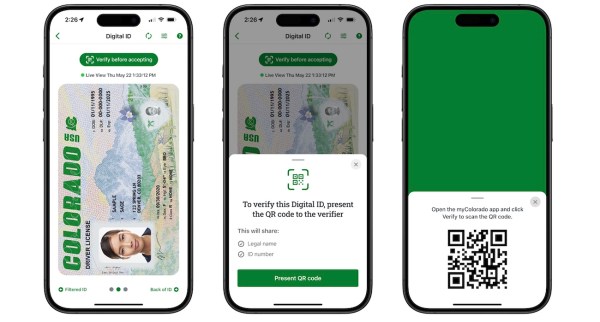How to satisfy a public’s appetite for convenient digital services

Tightening government budgets, aging populations and changing family structures pose major challenges for social service agencies. They are evolving in response to societal and economic shifts including a digital transformation that has been coined the fourth industrial revolution. The fast-changing digital landscape is expanding opportunities for social service agencies to radically rethink the way they deliver services and build confidence and trust with the citizens being served.
A recent survey of more than 3,300 U.S. citizens conducted by Accenture found that a vast majority — 85 percent — expect government to deliver digital services on par or better than commercial enterprises. This is a 12-point jump in just two years. The data shows that citizens now expect public services, including social services, to be streamlined, responsive, personalized and widely available through digital channels.
What’s needed next are people-centric organizational strategies that put citizens at the heart of service design. Using the principles of simplicity, usability, efficiency, and accountability, human-centered service design enables agencies to build services from the perspective of their customers to create seamless, multi-channel and tailored experiences that better meet users’ unique needs and preferences. What does this entail?
Mapping user needs
A great example of service design in action is the Whole Person Care Journey tool being used by Lutheran Social Services of Illinois. The organization serves a population that relies on a variety of public assistance programs. The tool was developed to monitor and coordinate the services offered by service providers. In addition to integrating care delivery, it documents the financial and other benefits of improved treatment, providing a valuable tool to support users throughout their recovery journey, and helps management by providing real-time insight on program performance.
The German Labour Agency’s new customer portal, enabled via multiple digital channels, offers personalized services to better meet individual needs and serves as a great example of human-centered service design. The portal offers a personalized dashboard to users, ability to track overall job-seeker journeys, advanced search functionality and a development planner tool to help users create tailored work or learning plans. The platform is powered by analytics that harness volumes of data to help target the right interventions, helping the right people at the right time. So, what is human-centered service design?
Phases of service design
- Discovery: Aims to understand the user and empathize with them and uses the discovered data to inform deep ethnographic research. This enables designers to get under the skin of how people feel and experience their situation.
- Envision: Focuses on synthesizing insights and generating ideas, building a series of personas developed collaboratively with practitioners and customers, to encompass the different types of people that are going to be interacting with the organization.
- Define: Involves taking the created personas on a customer journey, understanding all the touchpoints with the organization along the way. These not only provide powerful blueprints for service design, they also help spark conversations and build understanding that can secure buy-in from all stakeholders.
- Delivery: Development of agile prototypes and concepts to provide services to suit the clients’ needs and context, followed by ongoing development around evolving service needs, with trials of new ideas with service recipients.
The upside of incorporating these service design processes into social service delivery is considerable, particularly as agencies capitalize on the way in which the automation of transactional activity will free up the workforce. For instance, the use of artificial-intelligence-powered digital assistants to capture profiles and general case information can help leaders focus more on the relevant programs and interventions for the user. Moving to this type of interactive self-service model also provides a high-quality user experience for citizens. It also allows social service workers more time to address complex cases personally, redirecting human intervention to where it’s most valuable.
Existing workforces may be nervous about what is to come, but recent research shows that public sector leaders see new technology as enhancing rather than replacing the skills of their staff. A new Accenture survey of technology leaders in nine countries including the U.S. shows that almost half of public service professionals implementing advanced analytics and predictive modeling programs say that improving and supporting the work of their employees is their chief objective. Service design can help shape how these innovative new technologies could be deployed alongside the workforce to help maximize productivity and impact.
Many social service agencies have performed well so far in riding out economic and social volatility. Similar challenges and opportunities confront much of the public sector, but social service agencies specifically are at the sharp end of change. Those that respond positively will build a new model for delivering the public service of the future: personalized, digital and insight-driven services that proactively identify and better meet the needs of citizens by deploying appropriately skilled human capital and agile new technologies.






